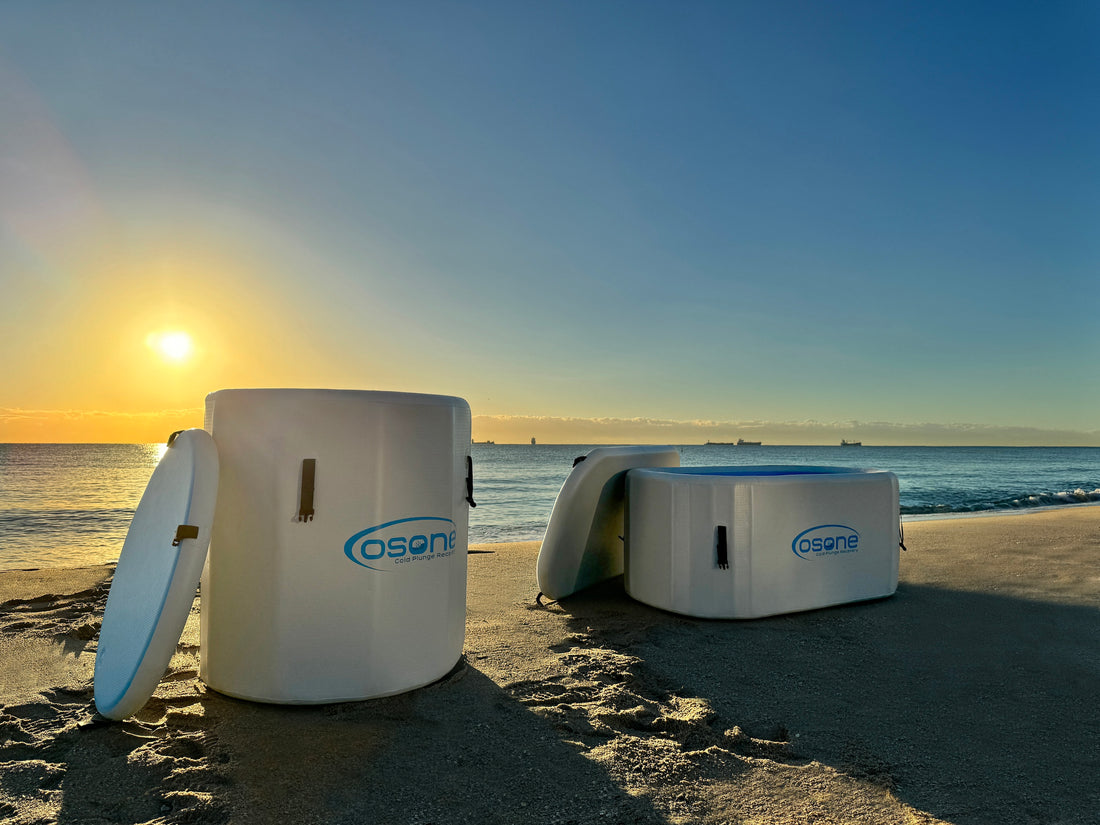Cold plunge therapy, an age-old wellness practice dating back to 3500BC, has recently surged in popularity due to its health and wellness benefits. This rejuvenating exercise involves immersing the body into cold water, typically at temperatures ranging from 59°F all the way down to 37°F. (15°C to 3°C), to reap physical and therapeutic benefits. Cold Plunging is most commonly done in two different orientations. An up-right, vertical cold plunge is where individuals stand or sit in deep pods or barrels. A tub-like horizontal cold plunges is the alternative, where individuals lie down in specially designed cold water tubs. This article explores the differences between both and the unique benefits each method offers.
COLD PLUNGE VERTICAL
The vertical cold plunge is said to be a more natural form of cold water immersion. It often involves standing or sitting in a deep pool of water often over 3-4ft. The depth of the water is such that it covers the entire body, usually up to the neck, allowing for an upright posture during the immersion.
Key Characteristics
- Less Accessible: Vertical plunges are less popular in commercial markets so options maybe limited.
- Space Accommodating: Vertical cold plunge products have a smaller footprint as the base is roughly half the size. For those with a tighter footprint, going vertical maybe your best option.
- Entry and exit: Entering and exiting the water requires more effort as the height can easily reach 3-4ft. A step stool outside the cold plunge is commonly added for ease of entry and exit. Depending on a person's height, one will need to have enough power to lift themselves out of the plunge in order to exit. This setup is better suited for athletes in our opinion.
- Better temperature control: As the opening of a Barrel or Pod exposes less water to ambient temperatures, the water temperature is more easily controlled versus a tub-like cold plunge. This minimal exposure allows for quicker water temperature control both in regards to cooling temperature and time to cool.
COLD PLUNGE HORIZONTAL
Horizontal cold plunging involves lying down in a cold water bath, often in a tub designed specifically for this purpose. This method ensures that the body is fully submerged in a horizontal position, sometimes with only the head above water.
Key Characteristics:
- Ease of entry and exit: Entering and exiting the water is easier as the height is roughly 30 inches or less in most cases. At some point, every person has used a bathtub so the concept is familiar.
- Deeper Relaxation: The horizontal position can be more conducive to relaxation and meditation, potentially enhancing stress reduction benefits.
- Enhanced Metabolic Rate: Some studies suggest that horizontal immersion might more effectively stimulate metabolic rate increases, aiding in weight loss and metabolism boosting.
- Expect longer cooling times: As the surface area of the water exposed to ambient temperatures is larger with tub-like cold plunges, it will take longer time to cool and to hold colder temperatures. This should be taken into account for Ice usage as well as Water Chiller requirements.
Benefits of both setups:
While both methods offer significant health benefits, the choice between vertical and horizontal cold plunge often depends largely on personal preference. Listed below are benefits of both options:
- Uniform Cooling: The even distribution of cold around the body can provide a uniform therapeutic effect, beneficial for managing chronic pain and inflammation.
- Intense Experience: Being fully submerged can intensify cold exposure, leading to a more profound physiological response.
- Full Body Immersion: Full immersion ensures an even exposure of the body to cold temperatures, potentially increasing the therapy's effectiveness.
- Enhanced Circulation: Cold Plunging helps promote blood circulation throughout the body, improving cardiovascular health.
- Muscle Recovery: Cold immersion reduces muscle inflammation and soreness, particularly beneficial after intense physical activity.
- Mental Resilience: Regular practice strengthens mental fortitude, enhancing one's ability to cope with discomfort and stress.
Both vertical and horizontal cold plunges provide unique sets of benefits, including improved circulation, reduced muscle soreness, enhanced mental resilience, and potential weight loss. The choice between vertical and horizontal cold plunge therapy ultimately depends on individual preferences, goals, and the physical and mental responses one wishes to elicit from the cold immersion experience. Whether seeking a social wellness activity, a personal challenge, or specific health benefits, cold plunge therapy offers a versatile and invigorating option for those looking to enhance their overall well-being.
As with any physical activity, it is highly recommended that you consult your physician before engaging in this activity.


